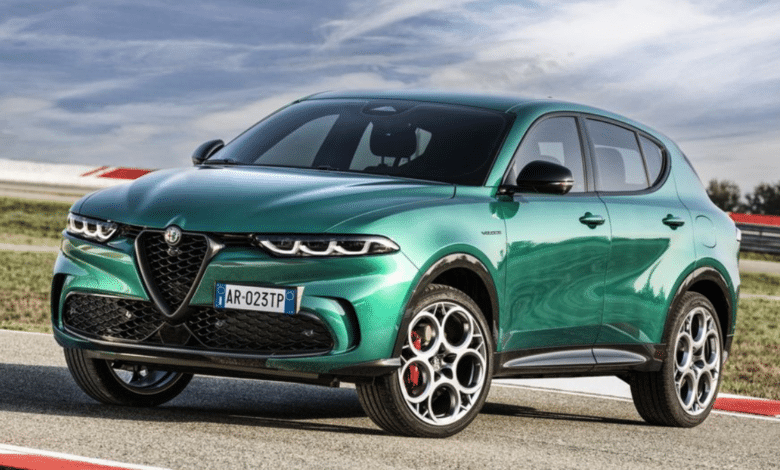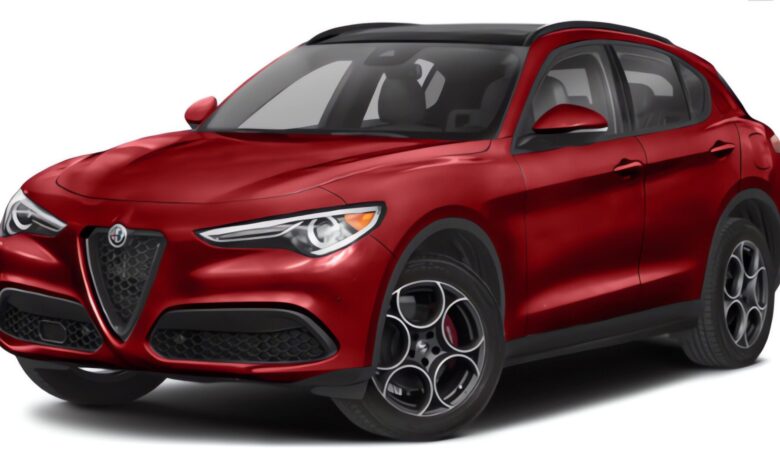Since helping to bring the Italian carmaker back to the United States seven years ago, the Alfa Romeo Giulia hasn’t…
Read More »Alfa Romeo
About Alfa Romeo

One of the oldest automobile manufacturers still in business is Alfa Romeo, a producer of high-performance premium vehicles.
Despite being recognizable as Italian, the manufacturer’s origins may be traced to the French Darracq company’s unsuccessful attempt to expand into Italy in 1906, when it erected a plant in Portello, a suburb of Milan. The Darracqs were unpopular with wealthy Italians, and the business was shut down. Some Italian Darracq investors founded the new company Anonima Lombarda Fabbrica Automobili, or A.L.F.A., at its plant in 1910. A year later, A.L.F.A. built its first automobile, the six-cylinder 24 H.P., so called because of its Italian tax rating.
After developing several vehicles, A.L.F.A. entered Grand Prix racing in 1914, but the First World War ended its automotive aspirations. Nicola Romeo, a former engineer turned mining mogul, took over control of A.L.F.A. in 1915. In 1919, car manufacture began, and in 1921, the business changed its name to Alfa Romeo. A reincarnation of the original 24HP was the first vehicle to sport the new badge.
Enzo Ferrari, one of the team’s drivers, finished second in the Targa Florio that year, giving the business its first taste of racing success. The firm produced expensive luxury automobiles and lightning-fast sports cars during the 1920s and 1930s, and starting in 1929, Scuderia Ferrari managed the company’s racing activities, enhancing its reputation for endurance and speed.
Even while the business continued to produce unusual automobiles and win races like the Mille Miglia, Le Mans, and Formula 1, it often struggled to profit. Nicola Romeo left the firm in 1928, and the Italian government took control of it in 1933. The government exploited the company as a P.R. tool to highlight Italy’s triumphs in industry and racing, and it was only during World War II that the facility was converted to produce aviation engines.
After the war, the company resumed producing opulent coach-built models like the 6C 2500 used in The Godfather’s Italian scenes. However, with most prewar employees gone—including Ferrari—and a tiny market for such vehicles, the company eventually began producing more commonplace cars, starting with the 1900 sedan in 1951 and moving on to even smaller vehicles like the 1954 Giulietta.
It continued to build considerable cars in the 1960s, such as the 2600. Still, it mostly created upper-middle-class models like the square-rigged Giulia, which had sophisticated engines and excellent handling. It only existed to a tiny group of fans in the U.S.A. until the Alfa Romeo Duetto Spider, a Giulia-derived vehicle, appeared in the 1967 movie The Graduate. The Spider remained unchanged until 1993 and was Alfa Romeo’s most well-liked American vehicle ever.
Alfa Romeo’s European portfolio grew to include economical vehicles in the 1970s with the introduction of the AlfaSud and a new Giulietta. Still, only the Spider and Alfetta, tiny sedan and coupe models, were marketed in the U.S.A. Alfas had a reputation for uncertain quality and unreliability due to a limited dealer network and significant labor relations issues in Italy, but they were entertaining to drive. Alfa collaborated with Fiat and Saab to create the 164 sedan in the 1980s when it could not afford to do it alone. In 1986, the Italian government eventually agreed to sell Alfa to Fiat.
Alfa Romeo kept selling the Spider in the United States until 1993. He had plans to replace it, but the Italian management abandoned the market due to weak sales, and U.S. sales terminated in the autumn of 1995.
In a way, Alfa made a comeback in 2007 with the very rare 8C Competizione supercar, but the company didn’t return until the time of Fiat Chrysler Automobiles. The 4C, a two-seat sports car, was the first new Alfa in the United States. Next came a refreshed Giulia sedan in 2016 and the Stelvio, the brand’s first S.U.V., in 2017. The same platform, known as ” ao” in the F.C.A. dialect, is used to construct both this and the Stelvio. It also returned to Formula 1 in 2018 as a constructor, although it could not replicate its previous success.
In 2019, Stellantis Group was created due to F.C.A.’s merger with Groupe P.S.A., the parent company of Peugeot and Citroen in France. In early 2021, the business said it was working on upcoming electric cars and moving away from the Giorgio platform.
The 2024 Alfa Romeo Tonale may be compared to its bigger Stelvio sister in certain aspects, much as Verdi is…
Read More »The 2023 Alfa Romeo Stelvio looks unusual for a compact crossover because it hails from Italy, has sharp styling, and…
Read More »


